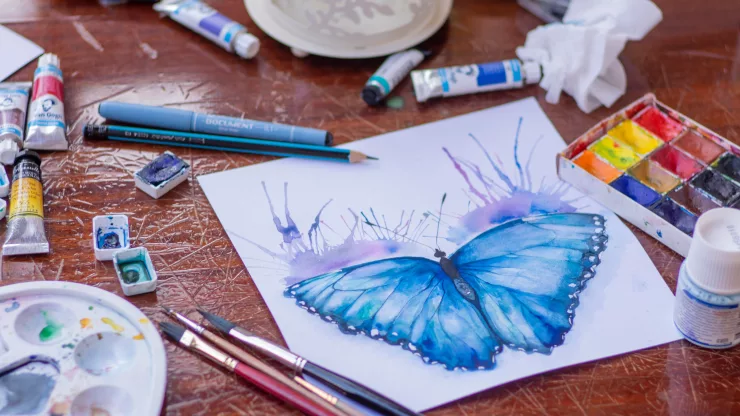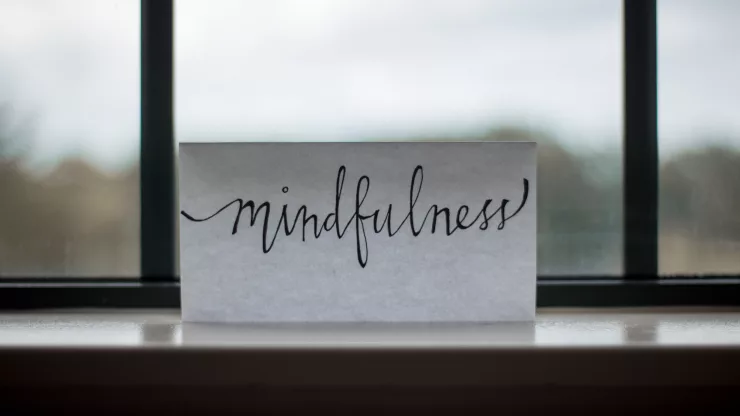INTRO: What is Expressive Arts Therapy?
Expressive Arts Therapy (EAT) is a form of psychotherapy that uses creative arts as a means of healing.
It is a holistic approach that combines various art forms, including painting, drawing, music, dance, drama, and writing, to help people explore their emotions, thoughts, and experiences.
EAT is based on the belief that creative expression can help individuals to process their feelings and experiences in a non-verbal way, which can be particularly helpful for those who struggle with verbal communication.
EAT is a relatively new form of therapy, but it has gained popularity in recent years due to its effectiveness in treating a range of mental health conditions, including depression, anxiety, trauma, and addiction. It is a safe and non-invasive approach that encourages individuals to tap into their creativity and explore their emotions in a supportive and non-judgmental environment.
The Healing Power of Creativity
Creative expression has long been recognized as a powerful tool for healing. Artistic expression can help individuals to tap into their unconscious mind and explore their emotions in a safe and supportive environment.
Research has shown that creative expression can have a positive impact on mental health, reducing symptoms of anxiety and depression, improving self-esteem and confidence, and promoting overall well-being.
The act of creating art can be therapeutic in itself, providing a sense of purpose and accomplishment. It can also help individuals to process traumatic experiences and work through difficult emotions in a non-verbal way.
Creative expression can be particularly helpful for those who struggle with verbal communication, providing an alternative means of expressing themselves.
How Expressive Arts Therapy Works
EAT is a collaborative process between the therapist and the individual, with the therapist acting as a guide and facilitator.
The therapist will work with the individual to identify areas of concern and explore their emotions and experiences through various art forms.
The focus is on the process of creation rather than the final product, with the aim of promoting self-discovery and personal growth.
EAT is a flexible approach that can be adapted to meet the needs of each individual. It can be used in individual or group therapy sessions and can be combined with other forms of therapy, such as cognitive-behavioral therapy (CBT) or mindfulness-based therapies.
Techniques and Tools Used in Therapy
EAT utilizes a range of techniques and tools to help individuals explore their emotions and experiences through creative expression. Some of the most commonly used techniques include:
-
Art-making: using various art forms, such as painting, drawing, and sculpture, to explore emotions and experiences
-
Music therapy: using music to promote emotional expression and relaxation
-
Dance/movement therapy: using movement to explore emotions and experiences
-
Drama therapy: using role-play and improvisation to explore emotions and experiences
-
Creative writing: using writing to explore emotions and experiences
Benefits of Expressive Arts Therapy
EAT has been shown to have a range of benefits for mental health and well-being, including:
-
Reduced symptoms of anxiety and depression
-
Improved self-esteem and confidence
-
Increased emotional expression and self-awareness
-
Improved communication skills
-
Increased resilience and coping skills
-
Improved interpersonal relationships
-
Reduced stress and tension
Real Life Success Stories
EAT has helped many people to overcome mental health challenges and improve their overall well-being. One success story is that of Sarah, who had struggled with anxiety and depression for many years.
Through EAT, Sarah was able to explore her emotions and experiences through various art forms, including painting and creative writing.
She was able to gain a deeper understanding of her feelings and develop coping strategies to manage her anxiety.
Another success story is that of James, who had experienced trauma in his childhood. Through EAT, James was able to process his traumatic experiences and work through his emotions through dance and movement therapy. He was able to develop a greater sense of self-awareness and self-acceptance, and his overall well-being improved as a result.
FAQ
How long does EAT typically last?
The length of EAT therapy can vary depending on the individual and their needs. It can range from a few sessions to several months or more.
Do I need to have artistic talent to participate in EAT?
No, artistic talent is not a requirement for EAT. The focus is on the process of creation rather than the final product, and the therapist will work with you to find the art forms that work best for you.
Is EAT covered by insurance?
EAT may be covered by some insurance plans, but it is best to check with your provider to confirm coverage.
Is EAT suitable for children?
Yes, EAT can be a particularly effective form of therapy for children, as it provides a non-verbal means of expression that can be particularly helpful for those who struggle with verbal communication.
Is EAT only suitable for individuals with mental health conditions?
No, EAT can be beneficial for anyone looking to explore their emotions and experiences through creative expression. It can be a helpful tool for personal growth and self-discovery.

With a deep passion for personal development, Ben has dedicated his career to inspiring and guiding others on their journey towards self-improvement.
His love for learning and sharing knowledge about personal growth strategies, mindfulness, and goal-setting principles has led him to create My Virtual Life Coach.
Contact Ben at [email protected] for assistance.




